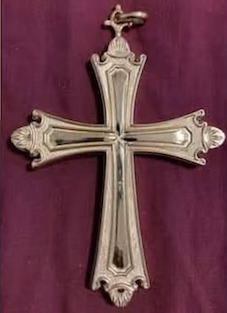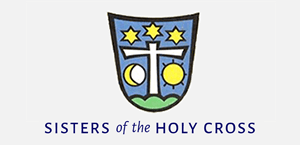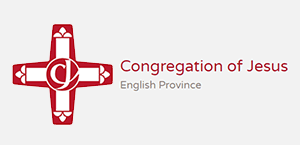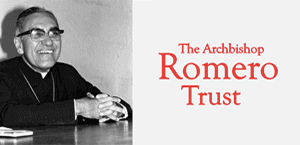Pope Leo's pectoral cross holds relics of Saints Augustine and Monica

Source: Vatican Media
The cross, which Pope Leo XIV wore when he first appeared to the world from the central balcony of St Peter's Basilica, is rich in symbolism. His pectoral cross containing relics of saints linked to the Augustinian order: including those of Saint Augustine and the saint's mother, Saint Monica.
At the centre of the cross is a relic of Saint Augustine, the great Church Father who taught that looking inward is key to encountering God and understanding His Word - something to be embraced with both faith and reason, so it may be shared with others. Alongside the relic of the Bishop of Hippo - spiritual father of the Augustinian Order and enduring guide through his Rule and writings - are relics of four other saints: Monica, Thomas of Villanova, Blessed Anselmo Polanco, and Venerable Giuseppe Bartolomeo Menochio.
The relics were chosen by Fr Josef Sciberras, Postulator General of the Augustinian Order, as a present from the General Curia to their confrère, Cardinal Robert Prevost, when he was created cardinal on 30 September 2023. Each relic represents a figure whose life reflects a key aspect of sanctity within the Augustinian family.
Speaking to Vatican Media, Fr Sciberras said he was overjoyed at the election of the new Pope. He recalled that Cardinal Prevost was "very moved" when the cross was given to him during a celebration at the refectory of the International College of Saint Monica. He knew that he would be carrying close to his heart relics of both Saint Augustine and his mother, Monica.
Fr Sciberras said: "The day before the conclave, I sent him a message, encouraging him to wear the cross we had given him, for the protection of Saints Augustine and Monica. I don't know whether it was because of my message or not, but when I saw he was wearing it when taking the oath - and again when he stepped out onto the balcony of the basilica - I was deeply moved."
The fragment of Saint Augustine's bone is a reminder of the Order of Saint Augustine, established by the Apostolic See in 1244. Over the centuries, the Order has followed his ideal of community life, apostolic service, spirituality, and study. The relic of Saint Monica highlights the deep and enduring bond between Augustine and his mother. Hers was a life marked by strength and perseverance, and through her tears and tireless prayers, she helped bring about her son's conversion. Augustine praised her virtues in his Confessions, seeing them as gifts from God.
Pope Francis had a particular devotion to Saint Monica, and as both cardinal and Pope, he would often visit her tomb in the Basilica of Saint Augustine in Rome's Campo Marzio. For the Augustinian Order, Monica's life and her son's path to conversion and consecration are deeply intertwined - cornerstones of Augustinian spirituality.
Saint Thomas of Villanova, who served as Archbishop of Valencia in the 15th and 16th centuries, was a major reformer of religious life and a true shepherd, one who "smelled of his sheep," to borrow a phrase used often by Pope Francis. He was known for his tireless care for the poor and his support of missions in the New World. A brilliant theologian, he also founded a seminary in Valencia in 1550, which still exists today, even before the Council of Trent's reforms on priestly formation.
Blessed Anselmo Polanco, Bishop of Teruel, was martyred during the Spanish Civil War (1936-1939). He remained steadfast in his duty to his people until the end, once declaring, "As long as even one of my flock remains, I will stay." Loyal both to the Pope and to his people, he was killed for his unshakable faith and Gospel witness.
Venerable Giuseppe Bartolomeo Menochio, Bishop of Porphyry and Prefect of the Apostolic Sacristy, served as Pontifical Sacristan from 1800. During the Napoleonic era, he stood firm in his loyalty to the Pope and endured great hardship for it. A central figure in the life of the Church in Rome, he died "in the odour of sanctity" on 25 March 1823. Pope John Paul II recognised his heroic virtues in 1991. Menochio is remembered as a devoted bishop and the only one who refused to swear allegiance to Napoleon, choosing instead to dedicate his life fully to the service of the Roman people.
The relics of Saints Augustine, Monica, Thomas of Villanova, Blessed Polanco, and Venerable Menochio were kept in the lipsanotheca of the Augustinian Postulation. Fr Sciberras entrusted them to relic expert Antonino Cottone, who placed them inside the pectoral cross later presented to the man who would become Pope.
"This cross isn't just a decorative object," Fr Sciberras explains. "It's a visible sign of faith and a clear reflection of pastoral commitment. The relics it contains are all linked to the Augustinian tradition, and each one represents fidelity, reform, service, or martyrdom - virtues that now guide and sustain the ministry of the new Pope."


















